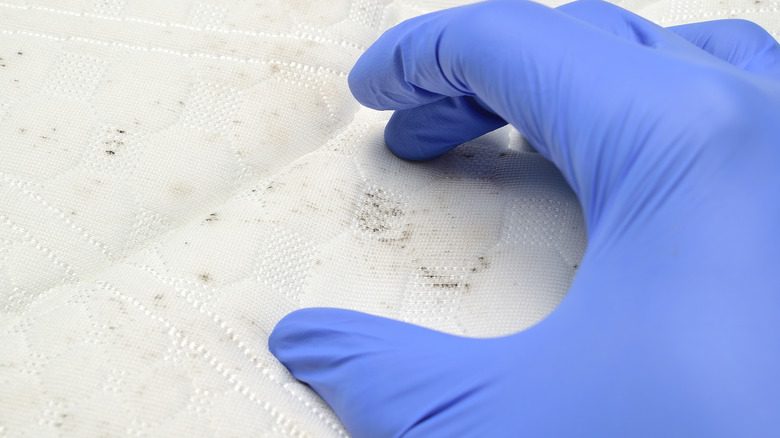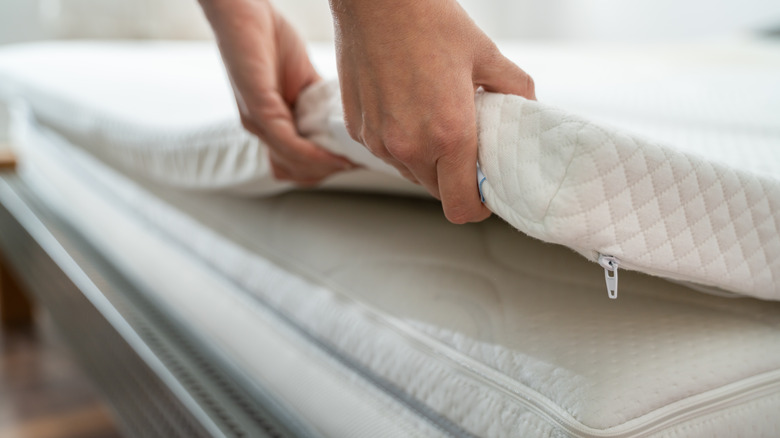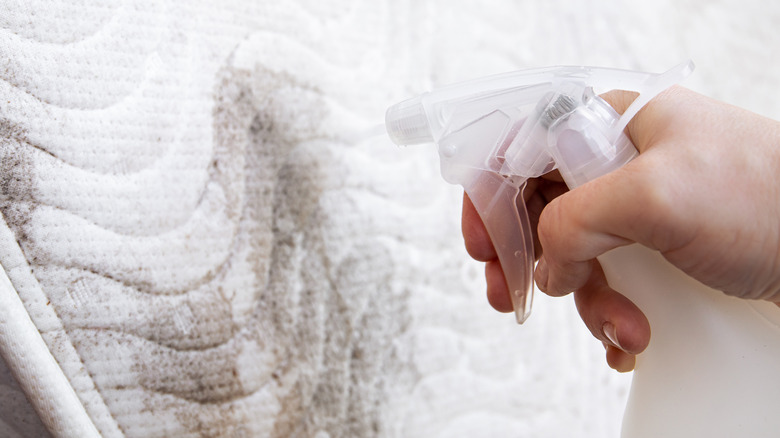After A Recent Recall, Here Are The Ways You Can Spot Hidden Mold In Your Mattress
On September 21, 2023, FXI Inc. and the United States Consumer Product Safety Commission issued a joint statement announcing the recall of approximately 48,000 mattresses sold exclusively at Costco. According to the release, the Novaform ComfortGrande 14-inch and Novaform DreamAway 8-inch mattresses may have been compromised during manufacturing due to water exposure. This recall is just one example of how your mattress can be a host for mold, even if you can't see it. Here are the ways you identify visible and hidden mold on and in your mattress and what you can do about it.
Mold exposure can be hazardous. Per the U.S. Centers for Disease Control and Prevention, respiratory symptoms can range from mild to life-threatening, particularly for those with underlying or chronic conditions, including allergies, asthma, lung disease, and other severe or immunocompromising conditions. Additionally, the National Institute of Environmental Health Sciences notes that continuous mold exposure may even cause a person to develop a type of fungal-triggered asthma. If you are experiencing any of these symptoms, checking your mattress for mold is important.
How to tell if your mattress has mold
Your first step is to do a visual inspection of your mattress. Check its surface, in its corners, and beneath it. Look for discolored pink, white, or black spots. Mattress manufacturer Purple notes that these discolored spots may feel "fuzzy or slimy." This is a sure sign that you have mold on your mattress. If you don't see any of these spots, the mold may be hidden inside your mattress.
According to Saatva, a manufacturer of luxury mattresses, there are a couple of ways to tell if you have mold hidden in your mattress. At this point, you should perform a "smell test." Moldy mattresses will have a very distinct, musty smell to them. The next is to check the environment in and around your mattress. If you have wooden bed slats, look to see if they are warped. Then, look at the wall next to your mattress to see if it appears discolored. Also, check if the paint or wallpaper is peeling back. These are all signs that you may have mold hidden in your mattress.
What to do and how you can prevent mattress mold
Fortunately, there are many ways to say goodbye to mold on your mattress. These range from DIY stain removal methods using hydrogen peroxide or isopropyl alcohol mixed with water to calling a professional mattress cleaning service. It is essential that you let your mattress fully dry before adding linens or any other covering to it. For more concerning cases of mold, you might want to consider replacing your mattress set altogether.
To keep mold from growing on or in your mattress, prevention is key. Mold forms from tiny spores that float through the air and come into contact with moisture. While air purifiers are a great option, they won't remove mold entirely. It is important to ensure you keep your home's humidity at a certain level. The U.S. Environmental Protection Agency states that it's maintained below 60%. Saatva recommends keeping your mattress clean and dry, particularly after exposure to moisture (including sweat). Purple suggests that you keep your fans running and invest in a dehumidifier.
If you think the FXI Inc. mattress recall may impact you, please visit its website for more information.


